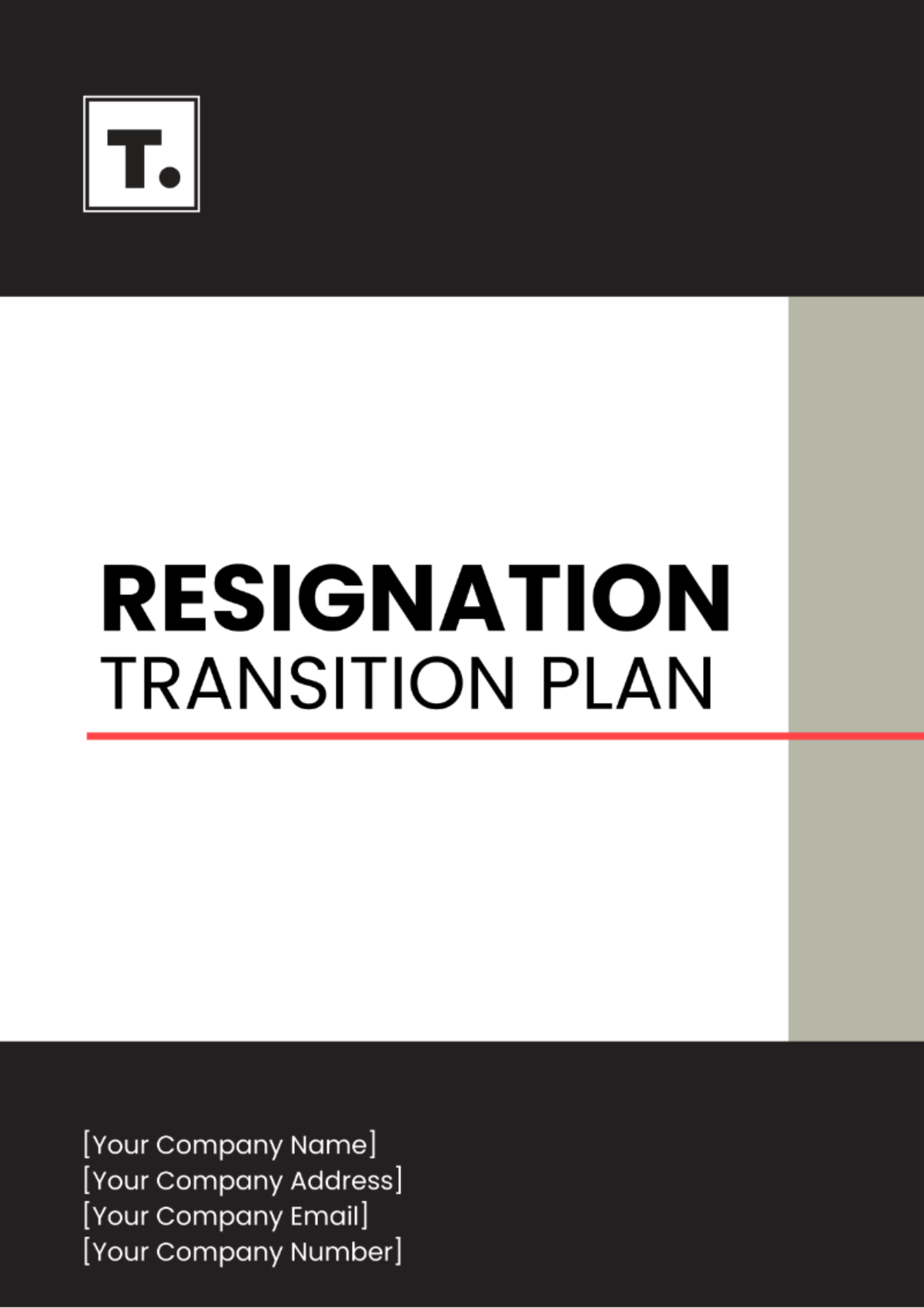EXECUTIVE TRANSITION PLAN
I. Introduction
The Executive Transition Plan delineates the strategic roadmap for ensuring a seamless and effective transition of leadership within [YOUR COMPANY NAME]. This comprehensive document outlines the strategies, timelines, key stakeholders, communication strategies, risk mitigation plans, and evaluation metrics crucial for a successful transition.
II. Transition Overview
A. Purpose Statement
The primary purpose of this transition plan is to facilitate the transition of [EXECUTIVE NAME] to the position of [NEW POSITION]. It aims to ensure continuity, stability, and strategic alignment during this pivotal organizational change.
B. Scope and Objectives
Transfer of Responsibilities: Detailing the transfer process of key responsibilities, projects, and decision-making authority.
Stakeholder Engagement: Engaging and aligning key stakeholders, including board members, senior management, employees, and external partners.
Cultural Integration: Fostering cultural integration and alignment with the organization's values, vision, and mission.
Knowledge Transfer: Ensuring a smooth transfer of critical knowledge, skills, and insights from the outgoing executive to the successor.
Operational Continuity: Maintaining operational efficiency and continuity throughout the transition period.
III. Key Stakeholders and Contact Information
Stakeholder | Role | Contact Information |
|---|---|---|
[STAKEHOLDER NAME] | [ROLE] | [CONTACT INFORMATION] |
[STAKEHOLDER NAME] | [ROLE] | [CONTACT INFORMATION] |
IV. Transition Timeline and Milestones
The transition timeline includes key milestones and associated activities:
Preparation Phase
Initial announcement and stakeholder briefing
Transition team formation and kickoff meeting
Stakeholder analysis and engagement planning
Transition Execution
Knowledge transfer sessions and documentation review
Role handover and induction of the new executive
Continuous communication and feedback mechanisms
Post-Transition Evaluation
Evaluation of transition success metrics
Follow-up actions and continuous improvement initiatives
Post-transition review and lessons learned documentation
V. Communication Plan
A. Internal Communication Strategy
Cascading communication plan from executive level to all employees
Town hall meetings, departmental briefings, and team updates
Regular progress updates and Q&A sessions
B. External Communication Strategy
Stakeholder notifications and updates
Public announcements, press releases, and media engagement
Client and partner communications regarding the transition and continuity plans
VI. Knowledge Transfer and Documentation
A. Documentation Review
Review and update of critical documents, including SOPs, project plans, and contact lists
Centralized knowledge repository for easy access and reference
B. Training and Development
Tailored training sessions for the incoming executive on organizational structure, goals, and strategic priorities
Mentorship and shadowing opportunities to facilitate a smooth transition
VII. Risk Management and Mitigation
A. Risk Identification
Identification of potential risks such as knowledge gaps, resistance to change, or operational disruptions
Stakeholder feedback mechanisms to proactively address concerns
B. Mitigation Strategies
Contingency plans for key risk scenarios
Regular risk assessments and updates to the transition plan
VIII. Evaluation and Monitoring Framework
A. Success Metrics
Employee feedback surveys and sentiment analysis
Achievement of key transition milestones and timelines
Operational performance indicators during and post-transition
B. Continuous Improvement Actions
Post-transition review and analysis
Implementation of recommendations and improvements
Ongoing monitoring and adjustment as needed
IX. Conclusion
The successful execution of this Executive Transition Plan is pivotal for ensuring a smooth leadership transition at [YOUR COMPANY NAME]. Continuous monitoring, clear communication, stakeholder engagement, risk management, and a focus on knowledge transfer are the cornerstones of a successful transition strategy. Through collaborative efforts and adherence to the outlined plan, we aim to achieve organizational continuity and success during this transition period.















































